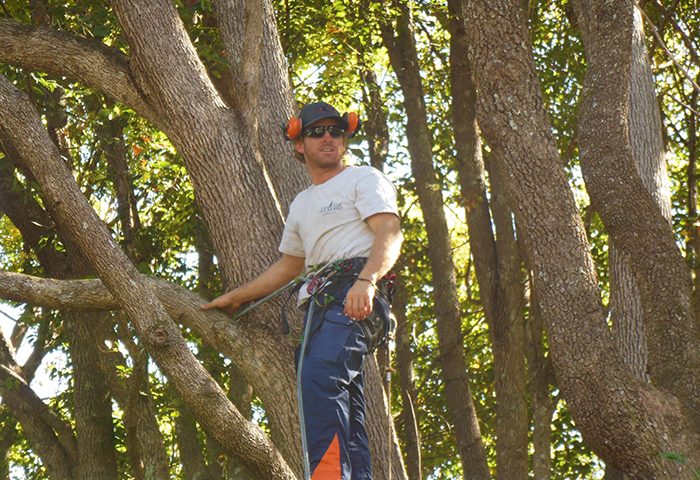Have you ever gazed at a beautifully manicured garden and wondered how each tree strikes the perfect balance between growth and shape? It’s lopping and pruning that keeps these giants healthy and aesthetically pleasing. Lopping and pruning are common practices in gardening and arboriculture that aim to maintain the health and aesthetics of trees and plants. Understanding the difference between these two methods is essential for anyone passionate about maintaining the vitality of their garden. In this blog, we’ll explore the differences between tree lopping and pruning, uncovering the essence of each technique and how they contribute to the vitality of trees.
Pruning
Pruning is a precise and strategic practice that promotes healthy plant growth, maintains the intended shape of trees and plants and prevents disease. It involves the selective removal of parts of a plant, such as branches, buds or roots. Key aspects of pruning include:
- Objective: Enhances the health and appearance of plants by removing dead, diseased or damaged branches, thereby preventing the spread of disease and pests. Pruning is also used to shape plants and trees for aesthetic purposes and can encourage flowering and fruiting.
- Technique: Involves careful, targeted cuts that are made with consideration for the plant’s growth patterns. Pruning cuts should be made just outside the branch collar (the area where a branch joins the trunk or another branch), allowing the plant to heal more effectively.
- Timing: The best time for pruning varies depending on the plant species and the goal (e.g., to stimulate growth or to restrict it). For many plants, late winter or early spring is ideal as the plant is dormant but about to enter a growth phase.
Lopping
Lopping refers to the removal of large branches from trees and is often performed to reduce the size of a tree or to remove potential safety hazards, such as branches that could fall during a storm. While lopping can have immediate benefits, it’s considered less precise than pruning and can negatively affect a tree’s health and structure. Key aspects of lopping include:
- Objective: Primarily aimed at reducing tree size or removing dangerous limbs that pose a risk to property or people. It’s often used in urban environments where trees might interfere with power lines or buildings.
- Technique: This involves cutting off large branches or limbs, sometimes without regard to the tree’s natural structure. This technique can lead to stubs that may not heal properly, leaving the tree vulnerable to disease and decay.
- Timing: While there’s no ideal time for lopping due to its invasive nature, it’s sometimes performed as a last resort or for safety reasons, regardless of the season.
Transform Your Landscape with Professional Tree Services
Understanding the nuances between tree lopping and pruning is important for those aiming to maintain or enhance the health and longevity of their trees. At Summerland Tree Services, we specialise in delivering expert tree care solutions tailored to your needs. Our services, including tree pruning and tree lopping in Ballina, ensure your trees survive and thrive. Whether it’s the meticulous precision required for tree pruning or the structured approach needed for tree lopping, our team of skilled professionals is equipped to enhance the health and beauty of your green space. Contact us today!

